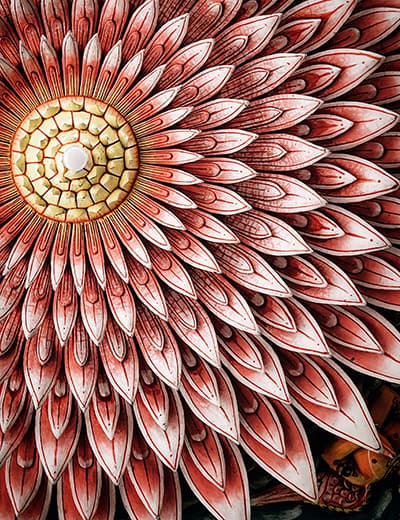
NARRATIVES
PARADISE MUST BE GAINED
South India
Far from the maddening crowd, out of the beaten track, a journey to the Andaman brings the traveller to the end of the world, as close as possible to paradise. But, paradise must be gained. My friend Lisa had just come back from her trip to India and wanted to have us all over for an exotic dinner and the inevitable slide show. Both Lisa and her husband Michael are so fond of India; I believe they have visited every nook and cranny of it. This time they had travelled as far East as possible in India; they had flown to the Andaman Islands, nearer to Thailand than to the South East coast of the country.
Lisa’s proficiency in Indian cuisine is legendary among our friends; we all have favourites: Mark swears by her yellow daal, the cream of lentils; Joan prefers the spicy aloo-gobi, potatoes and cauliflower; Paul and I always ask for baingan bharta, the best eggplants we ever had. If the vegetarian dinner is a good enough incentive for us to visit, the slide projection and the tales of their journeys always make for excellent entertainment.


As soon as the dinner is over, the projector is on, and Michael declares: “Paradise must be gained.” Before we can even start wondering what he means, he explains how long it takes to reach the Andaman Islands from the United States. The shortest way from New York to Chennai, flying through Dubai, takes 18 hours and 30 minutes. “Once there, we spent a few days in Mahabalipuram, strolling through the beautiful sculptural complex on the beach and recovering from jet lag. We then headed on to Port Blair, the capital of the Andaman Islands. The flight lasted only an hour and a half, but once in Port Blair, we had to spend the night waiting for the boat that would take us to Havelock Island.
Port Blair is a charming sea town, known in India for the infamous jail where the British kept the freedom fighters. We chose to skip the visit to the jail, now transformed into a museum, but we learned a lot about the islands and the tribal populations that still inhabit some of them from a visit to the anthropological museum. By then we couldn’t wait any longer. We wanted to arrive in Havelock, where our kamalan agent had reserved a Nilambari hut at the Barefoot Resort, a very promising name for weary city dwellers.

After a two-and-a-half-hour journey, our boat reached the port at Havelock, and we immediately enjoyed the atmosphere. Newly-wed couples on honeymoon carrying much too heavy luggage, entire Bengali families speaking their sweet language that sounds like bird songs, businessmen wearing a white cloth wrapped around their hips and a crisp white short-sleeved shirt. While the jeep was driving through the narrow lane winding through the island, Lisa and I looked at each other, smiling in anticipation. All around us, lovely countryside, huge trees, a few farmers stuck in bucolic times; no cars, no noise. The sheer simplicity of our hut made us happy. We dressed lightly and walked out, immediately longing to see the most beautiful beach in Asia, according to the Times magazine.
It was sunset when we laid eyes on Radhanagar beach. We just stood unable to utter a word, spellbound by the pristine scenery. We walked silently on the fine sand and felt our breath slow down. The days that followed were just perfect. We swam, we drove around the island on a small motorcycle, we met a kind population, we snorkelled, and we learned diving. Wherever we were, on land or in the sea, the beauty that surrounded us made us believe we were in paradise. Thank God that paradise is not so near; otherwise, it would be at risk of becoming crowded.”



While driving back home, my eyes filled with images of the blue lagoon, extravagant marine fauna, and divine sunsets, I said to Paul: “Do you think we could travel there for a couple of weeks next winter?” “Why not?” he answered, and I felt serene and happy, knowing that we too would soon be heading for paradise.
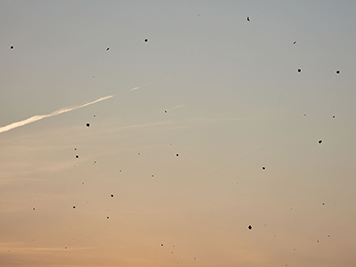
Seize the Place
Ahmedabad is white and yellow under winter’s sun, melting houses banally spread beyond her sight. Yet one more sprawling city...
Narrative • West India
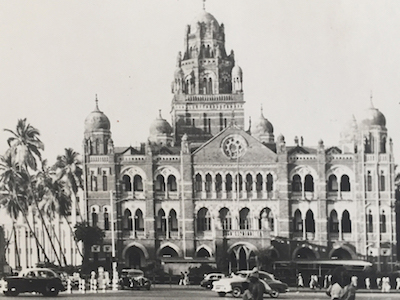
Circa. 1954
But also, they found his travel diary. My grandfather had very precious calligraphy, very 19the century, with all the letters...
Narrative • North India
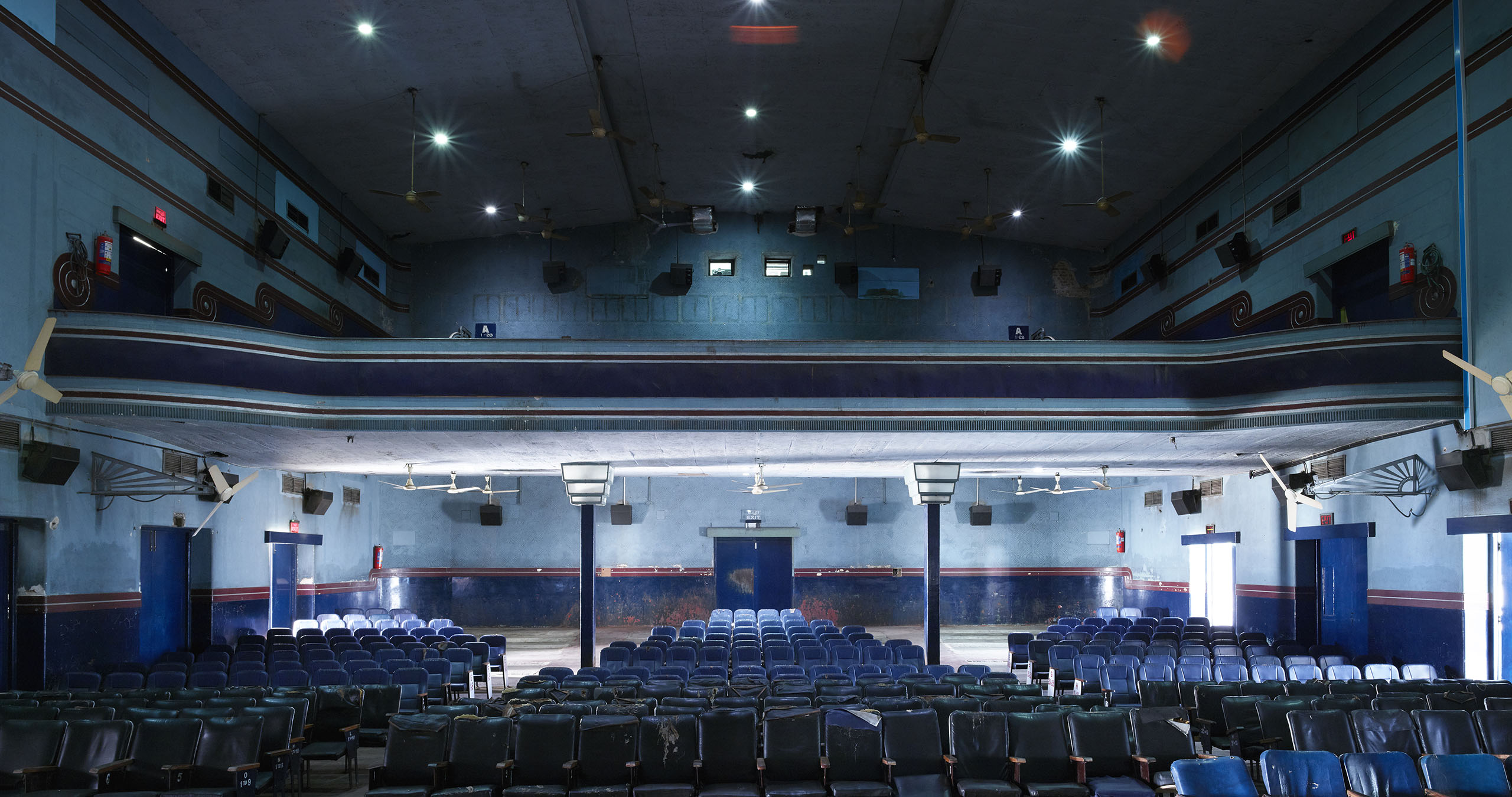
Cathedrals of Ecstasy
Retrace our steps with Hole & Corner as we explored the derelict performance spaces of Chennai and Madurai in the south...
Behind-The-Scenes • South India
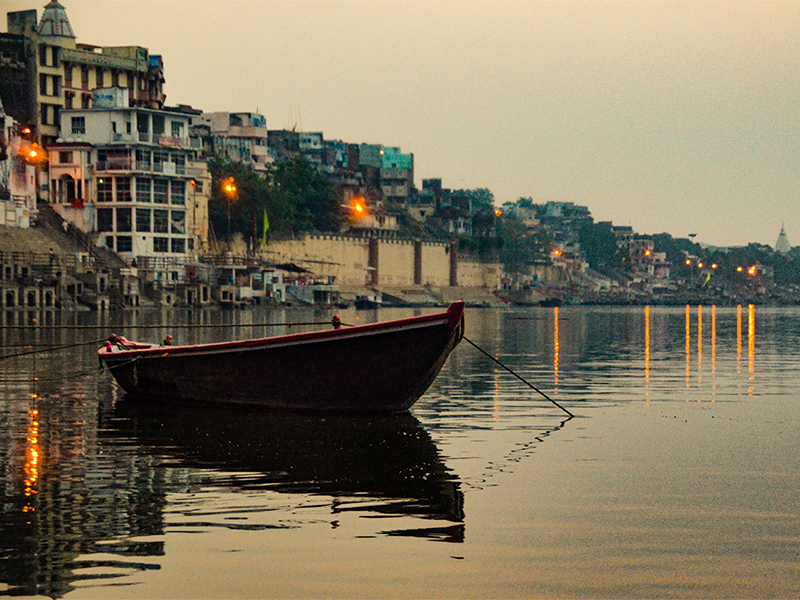
Daughter of the Mountains
A journey along the cities of the Indo-Gangetic Plains exploring the ways of life of its people as shaped by the river Ganges...
Bespoke Journey • North India
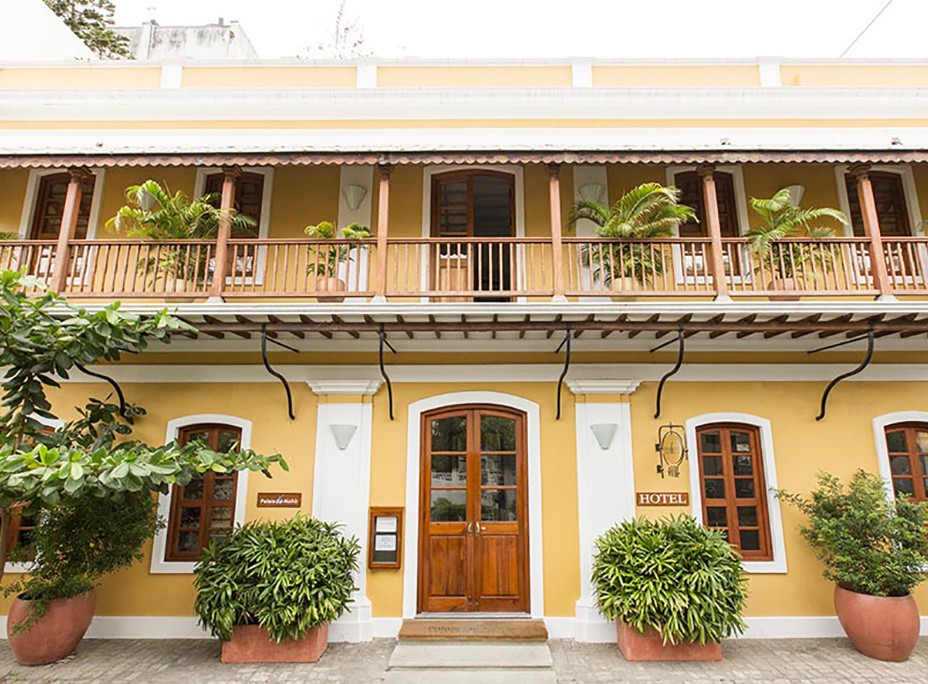
Palais De Mahe
The gentle rumbling of the sea beckons you towards worlds long lost – of palaces with high ceilings
Hotel Guide • South India
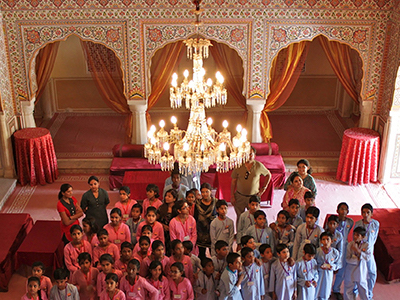
Easter Celebrations at a Palace
It is a joyous and beautiful day, the children of the Tushita Foundation have been invited by the owner of Samode Hotels...

